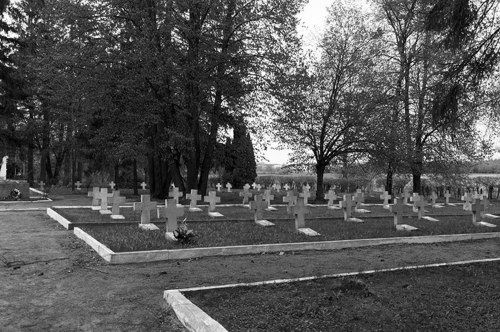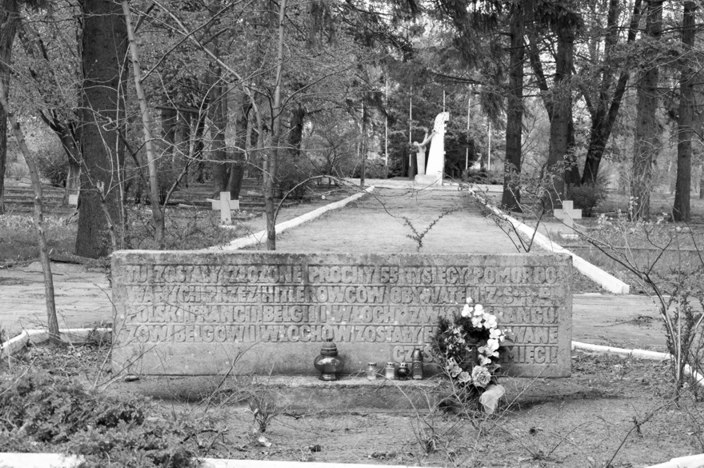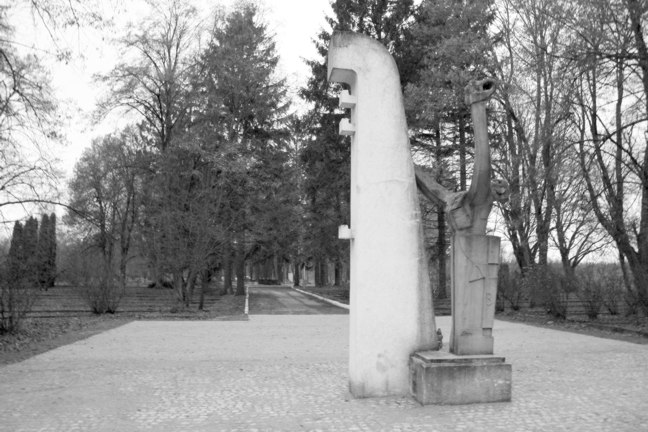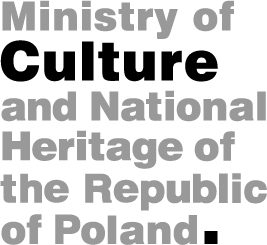|
|
cemetery at Sudwa Cemetery of the Victims of Fascism at Sudwa. The Village of Sudwa is located in Poland, Varmia-Masuria Province, county of Olsztyn, commune of Olsztynek. In 1914, battles between the German and Russian armies took place in the vicinity of the village of Sudwa. German historiography called the event "The Battle of Tannenberg". The soldiers who fell in the battle were burried in collective graves at small cemetries in the vicinity. To commemorate their spectacular victory over the Russians, the Germans built the Monument to the Glory of the Reich in the years 1924-1927; the monument is also known as the Hindenburg's Mausoleum – the monumental Tannenberg-Denkmal. In 1939, a camp for guests was built near to Królikowo as part of the planned anniversary celebrations linked to the erection of the memorial. The outbreak of the Second World War annuled these plans. Instead, the wooden barracks were inhabited by prisoners of war. In this way the camp called Stalag IB Hohenstein appeared – one of the largest in the East Prussian area and the largest in Eastern Europe. An area of 35 hectares accommodated 120 barracks. The prisoners included Poles, Belgians, French, Italians, Russians, and Serbs, each group being isolated from one other according to nationality. It has been estimated that 650 thousand POWs were kept in the camp, while approximately 60 thousand of them died as a result of exhaustion, hunger, diseases and maltreatment. Their bodies were buried at the cemetery in Sudwa. The corpses of 55 thousand POWs being laid there in more than 500 graves. The memory of the dead was commemorated in the form of a monument designed by Ryszard Wachowski. A plaque on the cemetary wall the cemetery informs: "Here, in this cemetery, the bodies of around 55,000 Polish, Russian, French, Belgian and Italian POWs – victims of the prisoner of war camp in Królikowo near Olsztynek (Stalag IB Hohenstein) were buried between September 1939 and January 1945. After the war the bodies of the French and Belgians POWs were transferred to their native lands, while the remains of the Italian POWs were exhumated and buried at the Italian Cemetery in Warsaw." Translated by Marzena Beata Guzowska
|

The cemetery of the Victims of Fascism at Sudwa, fragment, photo from 2013. 
A commemorative plaque in the cemetery at Sudwa, photo from 2013. 
The monument designed by Ryszard Wachowski, photo from 2013. |
|||
| |||||
